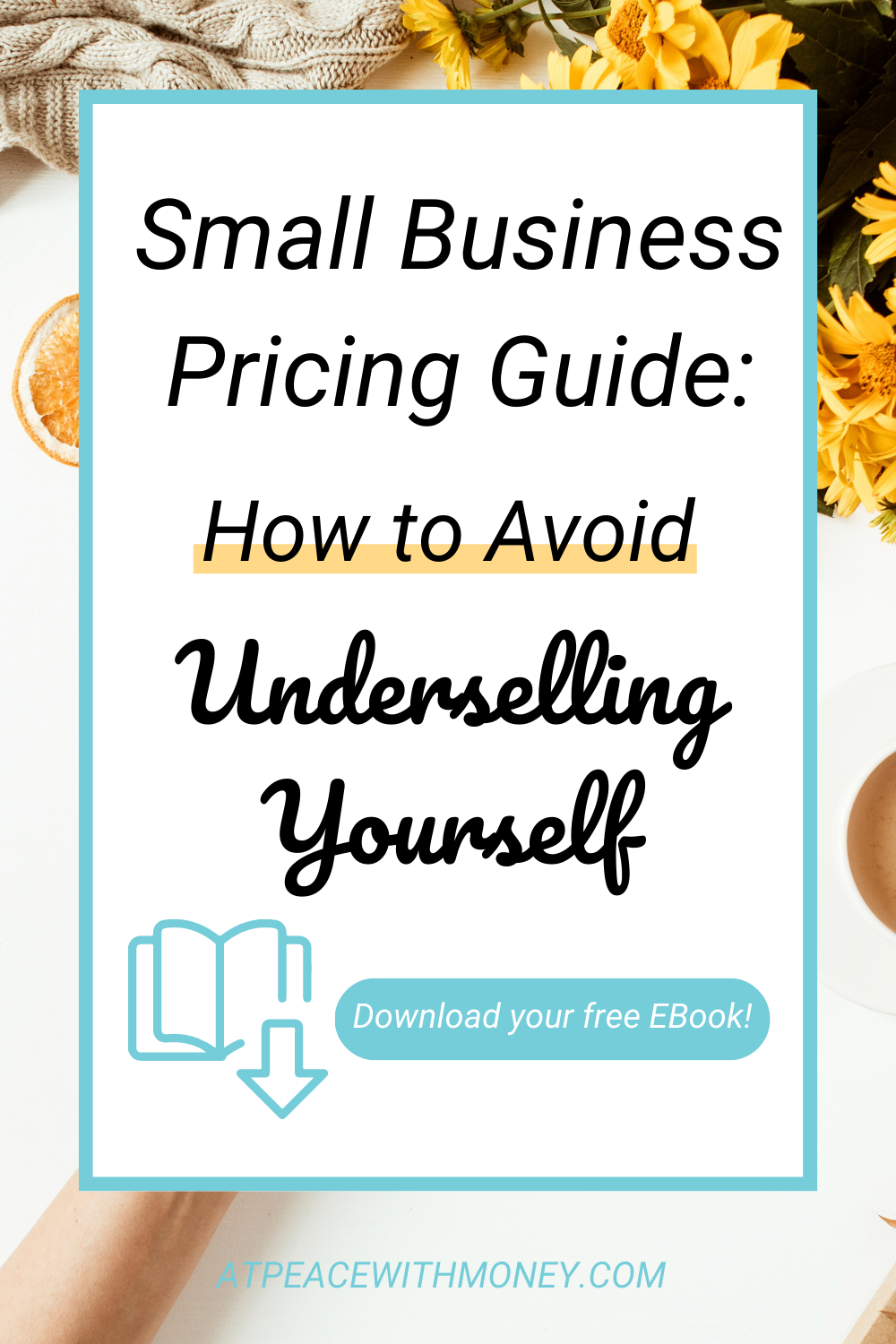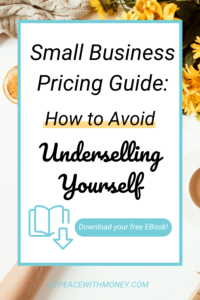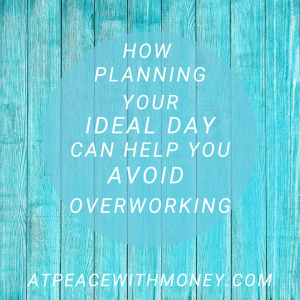Overcome Underearning: How to Avoid Underselling Yourself

A few years ago, I had the chance to speak with a group of businesswomen about their biggest financial mistakes. One that came up almost immediately was pricing products or services too low initially. Women especially struggle with worth and conceptualizing the value of their own labor, whether we’re working for an employer or ourselves.
Actually, I’d argue it can be even easier to get stuck in a cycle of chronically undervaluing yourself when you’re a solopreneur. One woman I spoke with shared about struggling with this. She priced her services too low initially. After realizing this, she found it difficult to raise her rates, because her first clients expected her low prices. She struggled between raising her prices and earning a wage that was too low for her needs.
Whether you’re in a similar position, or just starting out and not struggling with this, there are actions you can take to avoid this pitfall of solopreneurship.
Establish a Plan and a Purpose for Your Income
First, establish your money why – your purpose and plan for the money you earn though your business. Where will it go? What will it do? An important part of this process is looking through your expenses and determining how much your business will support you with them. Once you’ve established your money why, you’ll be able to set income goals based off this information, so that your income is truly able to cover your living expenses. Once you know how much money you need to make, it’s easy to figure out how high your prices need to be.
Consider Materials and Costs
Ask yourself a few more questions: What products or services are you planning to produce and sell most often? How much time, labor, and supplies will go into production? Account for those costs in your pricing formula, and make sure the answers are what you want them to be. If you’re planning to make most of your money from custom embroidered portraits, but you actually hate embroidery, maybe you’ll want to tinker with your profit model a bit. After this inquiry, you’re well on your way to pricing yourself well. For more resources, check out this article I wrote about my interview with Megan Auman.
Work on Your Mindset
If you’ve already priced your products and wound up in a similar situation to the woman above, you can still double back and figure out your true income targets and prices. The real challenge comes in actually implementing a rate change. Before you do this, it can be helpful to do some mindset work. Raising your rates can be a scary prospect that brings up all kinds of emotional baggage, but if you work on it, you can get to a point where you feel settled. Then, go ahead and raise your prices! You deserve to be comfortable and make a living wage. After all, isn’t that why you went into business for yourself?
If you enjoyed this post, you might also enjoy a free copy of my eBook, Reach Your Life Goals: a Business Owner’s Guide. Click here or below to download your free copy.







 If you’ve already priced your products and wound up in a similar situation to the woman above, you can still double back and figure out your true income targets and prices. The real challenge comes in actually implementing a rate change. Before you do this, it can be helpful to
If you’ve already priced your products and wound up in a similar situation to the woman above, you can still double back and figure out your true income targets and prices. The real challenge comes in actually implementing a rate change. Before you do this, it can be helpful to 



 Another thing for product-based businesses to consider when looking at your pricing is your interest in wholesaling. When selling wholesale, you will typically sell at 50% of your retail price. If, at this price, you’re not covering your costs, labor and making a profit that supports your financial goals, you need to raise your prices.
Another thing for product-based businesses to consider when looking at your pricing is your interest in wholesaling. When selling wholesale, you will typically sell at 50% of your retail price. If, at this price, you’re not covering your costs, labor and making a profit that supports your financial goals, you need to raise your prices. 


 It’s important to note that beyond income needs, there are many other reasons why we might find it difficult to put a cap on our work hours. Many people use work as a coping mechanism, or pride themselves on long hours. Being busy is not a badge of honor. In the long run, busying yourself with your business can lead to solopreneur burnout and a lack of fulfillment in your business. The more you choose to
It’s important to note that beyond income needs, there are many other reasons why we might find it difficult to put a cap on our work hours. Many people use work as a coping mechanism, or pride themselves on long hours. Being busy is not a badge of honor. In the long run, busying yourself with your business can lead to solopreneur burnout and a lack of fulfillment in your business. The more you choose to 


 If you’ve already priced your products and wound up in a similar situation to the woman above, you can still double back and figure out your true income targets and prices. The real challenge comes in actually implementing a rate change. Before you do this, it can be helpful to
If you’ve already priced your products and wound up in a similar situation to the woman above, you can still double back and figure out your true income targets and prices. The real challenge comes in actually implementing a rate change. Before you do this, it can be helpful to 


 Another thing for product-based businesses to consider when looking at your pricing is your interest in wholesaling. When selling wholesale, you will typically sell at 50% of your retail price. If, at this price, you’re not covering your costs, labor and making a profit that supports your financial goals, you need to raise your prices.
Another thing for product-based businesses to consider when looking at your pricing is your interest in wholesaling. When selling wholesale, you will typically sell at 50% of your retail price. If, at this price, you’re not covering your costs, labor and making a profit that supports your financial goals, you need to raise your prices.